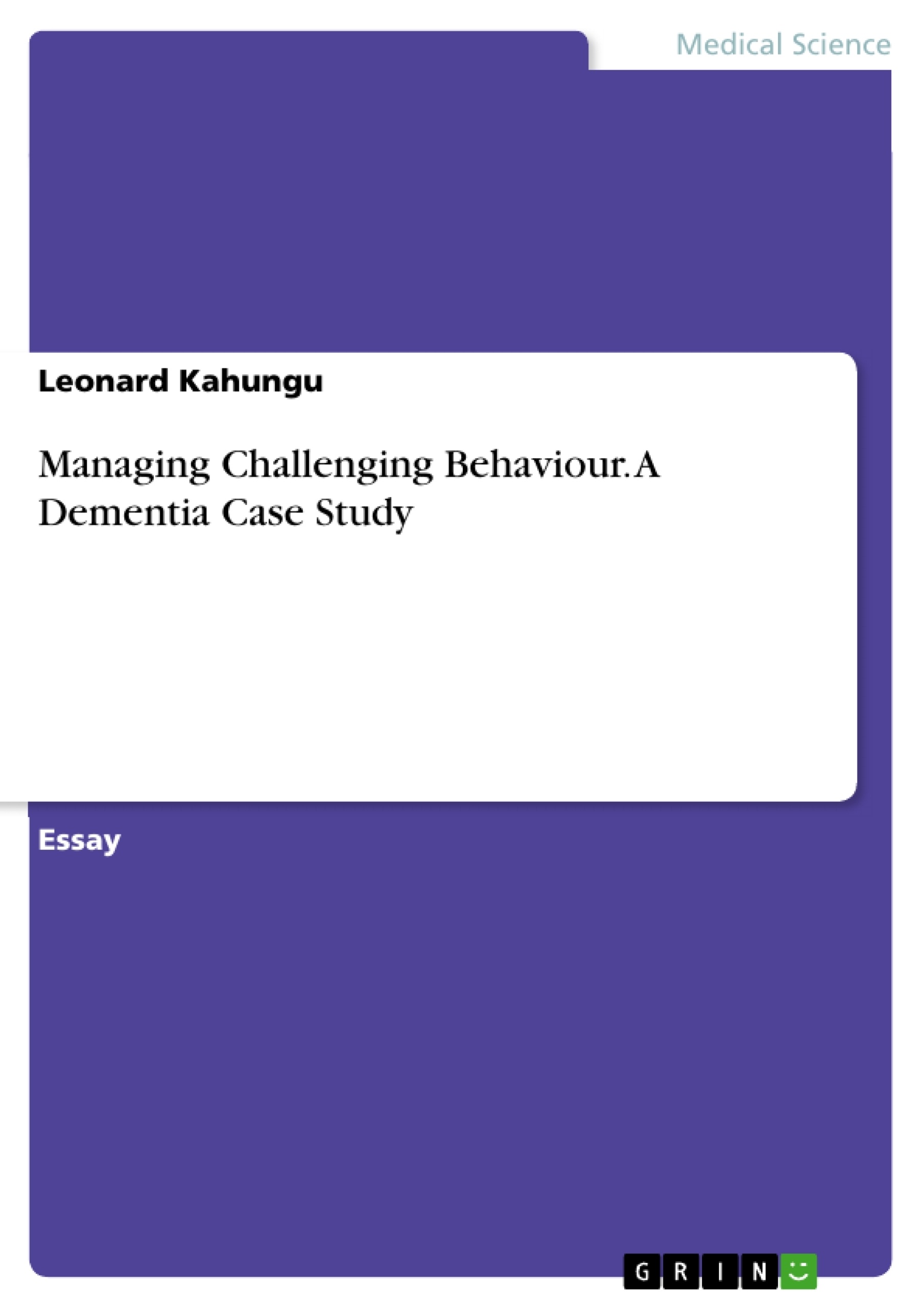The human behaviour, whether good, bad, or unusual, exhibits the expression of emotional needs and feelings. It is a form of communication, which is presented in innumerable ways. Nevertheless, these behaviours may at times be considered abnormal when the fall short of social expectations. This is exemplified by the loss of memory, concentration and the inability to reason or make rational decisions are some of the socially and clinically significant behaviours in people with dementia. Restless, disturbing behaviours that hinder the creativity, skills along with the coping resources of the caregiver is commonly known as challenging behaviours. A person diagnosed with dementia may display agitation and aggressive behaviours in reaction to various external and internal stimuli. These features are mirrored on Mr. Holt’s case scenario. The details obtained indicates that the patient was initially fine and considered a model patient, until his behaviours drastically deteriorated and made it difficult for the caregivers to administer standard procedures and treatments. This illustrates the significance of understanding the concepts of challenging behaviours is paramount in behaviour therapies, especially in dementia management.
Inhaltsverzeichnis (Table of Contents)
- Introduction
- The Concepts of Challenging Behaviour
- Challenging Behaviours and the Risk of Misdiagnosis
- Potential Impact of Challenging Behaviour to Health and Social Care Organisations
- Strategies for Working with Challenging Behaviours Associated with Specific Needs
Zielsetzung und Themenschwerpunkte (Objectives and Key Themes)
This text aims to provide an in-depth analysis of challenging behaviors within the context of dementia care, particularly focusing on the case of Mr. Holt at the Ivy Nursing Home. It delves into the concepts of challenging behaviors, their potential for misdiagnosis, and the impact on health and social care organizations.
- The nature and prevalence of challenging behaviors in dementia patients.
- The importance of accurate diagnosis and the risks of misdiagnosis.
- The impact of challenging behaviors on healthcare staff and resources.
- Strategies for managing challenging behaviors and promoting personalized care.
- The ethical and legal considerations surrounding the use of restrictive practices.
Zusammenfassung der Kapitel (Chapter Summaries)
- Introduction: This chapter defines challenging behavior and explores its significance in dementia care. It highlights the case of Mr. Holt, whose behavior deteriorates, demonstrating the need for understanding this complex phenomenon.
- The Concepts of Challenging Behaviour: This chapter examines the origin and definition of challenging behavior, emphasizing its impact on individuals with intellectual disabilities and the challenges it poses for caregivers. It also highlights the potential strain on resources and the importance of personalized care.
- Challenging Behaviours and the Risk of Misdiagnosis: This chapter delves into the complexities of diagnosing dementia patients with challenging behaviors. It discusses the risk of misdiagnosis due to patient behaviors and the potential for overlooking underlying medical conditions.
- Potential Impact of Challenging Behaviour to Health and Social Care Organisations: This chapter explores the consequences of challenging behaviors for health and social care organizations. It examines the potential for physical and emotional harm to staff and other patients, as well as the strain on resources and productivity.
Schlüsselwörter (Keywords)
This text focuses on key concepts like dementia, challenging behaviors, misdiagnosis, personalized care, and the impact of these issues on healthcare organizations. It further examines the role of staff training, ethical considerations, and the need for effective observation and diagnostic approaches in addressing challenging behaviors in dementia patients.
- Quote paper
- Leonard Kahungu (Author), 2018, Managing Challenging Behaviour. A Dementia Case Study, Munich, GRIN Verlag, https://www.grin.com/document/428637



